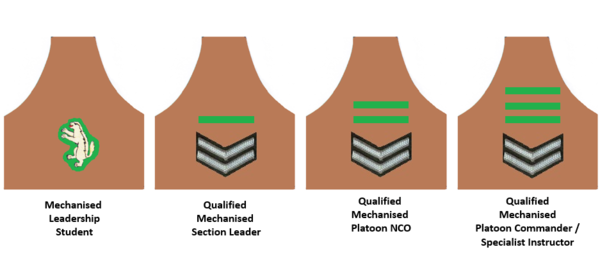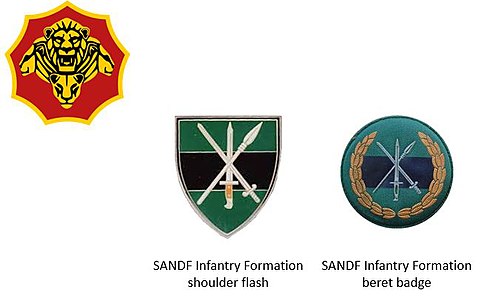
The Patria AMV is an 8×8 multi-role military vehicle produced by the Finnish defence industry company Patria.

The Eland is an air-portable light armoured car based on the Panhard AML. Designed and built for long-range reconnaissance, it mounts either a 60mm (2.4 in) breech-loading mortar or a Denel 90mm (3.5 in) gun on a very compact chassis. Although lightly armoured, the vehicle's permanent 4X4 drive makes it faster over flat terrain than many tanks.

The Ratel is a South African infantry fighting vehicle. It was the first wheeled infantry fighting vehicle to enter service worldwide and was built on a modified MAN truck chassis. The Ratel was designed in response to a South African Army specification for a light armoured vehicle suited to the demands of rapid offensives, providing maximum firepower and strategic mobility to mechanised infantry units intended to operate across the vast distances of Southern Africa. Primarily envisaged in SADF doctrine as a vehicle that could deliver mechanised infantry and supporting fire to tanks in conventional warfare, it was also anticipated that the Ratel could form the centrepiece for semi-independent battlegroups where logistics or politics precluded the use of tanks. The Ratel was a simple, economical design which helped reduce the significant logistical commitment necessary to keep heavier combat vehicles operational in undeveloped regions. It was generally regarded as an influential concept which incorporated a number of novel features, such as a mine-protected hull, an extended operating range of 1,000 kilometres, and a 20 mm autocannon fitted with what was then a unique twin-linked ammunition feed, allowing turret gunners to rapidly swap between ammunition types during combat.
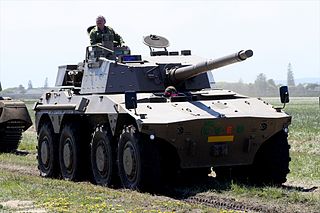
The Rooikat is a South African armoured reconnaissance vehicle equipped with a stabilised 76 mm (3.0 in) high velocity gun for organic anti-tank and fire support purposes. The Rooikat's main armament was built with the Oto Melara 76 naval gun as its basis, to which it is nearly identical in terms of technical performance and statistics. The Rooikat can also fire the same ammunition as the naval gun, albeit modified with new percussion primers in the shells.

The South African National Defence Force (SANDF) comprises the armed forces of South Africa. The commander of the SANDF is appointed by the President of South Africa from one of the armed services. They are in turn accountable to the Minister of Defence and Military Veterans of the Defence Department.
Land Systems OMC is a South African company that produces a range of armoured vehicles which have been successfully exported and are in service with, amongst others, the U.S., Canadian and South African militaries. It is a division of Denel SOC LTD, located in Benoni, Gauteng.

The South African Army Infantry Formation supervises all infantry within the South African Army.
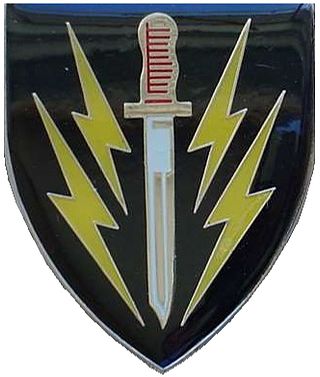
61 Mechanised Battalion Group was a unit of the South African Infantry Corps; although it was classed as mechanized infantry, it was a combined arms force consisting of infantry, armour and artillery.
Operation Moduler was a military operation by the South African Defence Force (SADF) during the South African Border War. It formed part of what has come to be called the Battle of Cuito Cuanavale. The Angolan objective was to advance south-east to attack the UNITA at Mavinga. The SADF objective was to protect UNITA by stopping that advance. The advance was halted with heavy Angolan casualties. The South African forces and its UNITA allies then began offensive operations against the Angolan forces, who had retreated back to a defensive line east of the Cuito River with the objective of destroying them once and for all.

1 Special Service Battalion is an armoured regiment of the South African Army and only one of two such in its regular force. The Regiment is based at Tempe near Bloemfontein.

The ZT3 Ingwe (Leopard) is a modern South African multi-role laser beam riding anti-tank guided missile (ATGM) manufactured by Denel Dynamics.

Denel Land Systems is a division of the Denel group.

Lohatla is a training area of the South African National Defence Force. It is located in the Northern Cape province of South Africa and is home to the SA Army Combat Training Centre, which is part of the South African Army Training Formation.
Operation Khukri was a multinational operation launched in the United Nations Mission in Sierra Leone (UNAMSIL), involving India, Ghana, Britain and Nigeria. The aim of the operation was to break the two-month-long siege laid by armed cadres of the Revolutionary United Front (RUF) around two companies of 5/8th Gorkha Rifles Infantry Battalion Group of the Indian Army at Kailahun by effecting a fighting breakout and redeploying them with the main battalion at Daru.

4 South African Infantry Battalion is a motorised infantry unit of the South African Army.

7 South African Infantry Battalion is a motorised infantry unit of the South African Army.

8 South African Infantry Battalion is a mechanized infantry unit of the South African Army. The battalion is equipped with Ratel Infantry Fighting Vehicles (IFV) used for fast transport and combat mobility across rough ground. Support weapons for mechanized infantry are also provided with motorized transport, or are built directly into these IFVs, in order to keep pace with the IFVs in combat. The battalion was raised at Upington in the Northern Cape in 1973 as part of the South African Infantry Corps, and since the change in structure, has been assigned to the Infantry Formation.
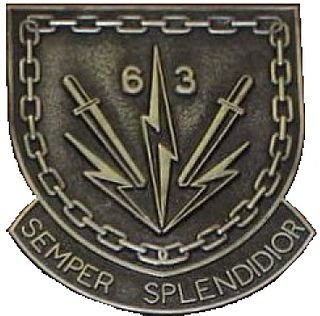
63 Mechanised Battalion Group was a unit of the South African Infantry Corps; although it was classed as mechanized infantry, it was a combined arms force consisting of infantry, armour and artillery. Together with 61 Mechanised Battalion Group and 62 Mechanised Battalion Group, these units made up 60 Brigade encompassing battlegroup principles.

The Badger IFV is an 8-wheeled Infantry fighting vehicle under development by Denel Land Systems of South Africa. The Badger IFV will be a modified and better protected version of the Finnish Patria AMV, tailored for the South African National Defence Force (SANDF) and modified for South African conditions.




